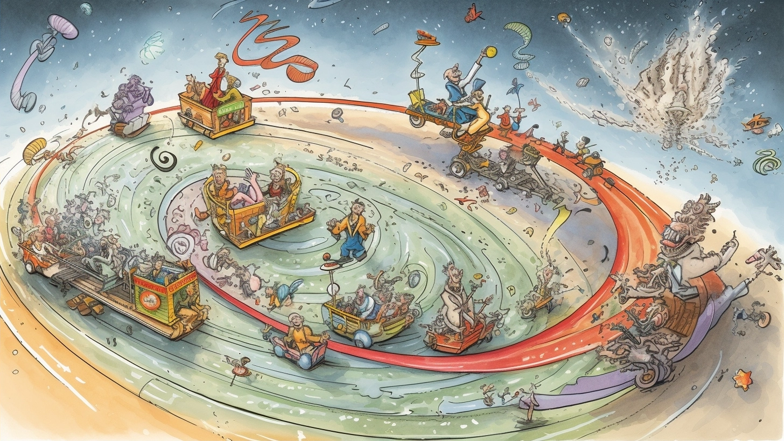
What is the Lorentz Transformation?
The Lorentz Transformation is a mathematical equation that describes how measurements of time and space are affected by the speed of an observer. It is named after the physicist Hendrik Lorentz, who first formulated the equation in the late 19th century. However, it was not until the early 20th century, with the introduction of Albert Einstein's theory of special relativity, that the true significance of the Lorentz Transformation became apparent. Special relativity is based on the idea that the laws of physics are the same for all observers, regardless of their motion. The Lorentz Transformation is central to this theory because it describes how measurements of space and time can look different for different observers.
To understand the Lorentz Transformation, we first need to understand the concept of a space-time interval. In classical mechanics, time and space are considered to be separate and independent. However, in special relativity, they are combined into a single concept called space-time. The space-time interval between two events is the distance between them in both time and space. This interval can be thought of as a kind of four-dimensional distance that incorporates both time and space.
The Lorentz Transformation describes how the space-time interval between two events changes when viewed from different reference frames. A reference frame is simply a set of coordinates that we use to describe the motion of an object. The Lorentz Transformation tells us how to transform the coordinates of one reference frame into the coordinates of another reference frame that is moving relative to the first. This transformation includes changes to both the time and space coordinates, and is different from the Galilean transformation used in classical mechanics.
How is the Lorentz Transformation Applied in Physics?
The Lorentz Transformation has many applications in physics, including in the study of particle physics, cosmology, and electromagnetism. One of the most important applications of the Lorentz Transformation is in the prediction of the behavior of particles at very high velocities.
At high velocities, particles experience a number of effects due to special relativity. For example, they become more massive, time appears to slow down for them, and their length contracts in the direction of motion. The Lorentz Transformation can be used to calculate these effects and predict how particles will behave in different situations. This has led to many discoveries in particle physics, including the existence of antimatter and the discovery of the Higgs boson.
The Lorentz Transformation is also central to our understanding of electromagnetism. In classical electromagnetism, electric and magnetic fields are independent of each other. However, in special relativity, they are combined into a single entity called the electromagnetic field. The Lorentz Transformation can be used to describe how the electromagnetic field appears to change when viewed from different reference frames. This has important implications for our understanding of how electricity and magnetism behave in different situations, and has led to the development of technologies such as computers and the internet.
What are the Ramifications of the Lorentz Transformation?
The Lorentz Transformation has profound implications for our understanding of the world, including our concept of space, time, and motion. One of the most striking implications of the Lorentz Transformation is that measurements of space and time are not absolute, but depend on the observer's motion.
This means that two observers moving at different speeds can measure different lengths and durations for the same event. For example, if two spaceships pass each other in deep space, they will measure different lengths and times for the event, depending on their relative motion. This is known as the relativity of simultaneity, and is a consequence of the Lorentz Transformation.
Another implication of the Lorentz Transformation is that the speed of light is constant for all observers, regardless of their motion. In classical mechanics, we think of velocity as a relative concept - two objects moving in opposite directions relative to a third object will have velocities that add up to zero. However, in special relativity, the speed of light is always measured to be the same, regardless of the motion of the observer. This has important implications for the behavior of light and electromagnetic radiation, and has been confirmed experimentally many times.
Conclusion
The Lorentz Transformation is a fundamental concept in special relativity, with far-reaching implications for our understanding of the universe. While the mathematics of the Lorentz Transformation can be challenging, it is also one of the most fascinating and profound areas of scientific inquiry. By exploring the theory of the Lorentz Transformation, its applications in physics, and its ramifications for our understanding of the world, we can gain a better appreciation of the beauty and complexity of modern physics.
Comments
Post a Comment